[English] 日本語
 Yorodumi
Yorodumi- PDB-2lck: Structure of the mitochondrial uncoupling protein 2 determined by... -
+ Open data
Open data
- Basic information
Basic information
| Entry | Database: PDB / ID: 2lck | ||||||
|---|---|---|---|---|---|---|---|
| Title | Structure of the mitochondrial uncoupling protein 2 determined by NMR molecular fragment replacement | ||||||
 Components Components | Mitochondrial uncoupling protein 2 | ||||||
 Keywords Keywords | TRANSPORT PROTEIN / membrane protein / proton translocator / mitochondrial carrier / Structural Genomics / Membrane Protein Structures by Solution NMR / MPSbyNMR / PSI-Biology | ||||||
| Function / homology |  Function and homology information Function and homology informationoxaloacetate transmembrane transporter activity / The fatty acid cycling model / phosphate ion uniporter activity / malate transmembrane transporter activity / negative regulation of calcium import into the mitochondrion / C4-dicarboxylate transport / cellular response to lead ion / mitochondrial transmembrane transport / secondary active sulfate transmembrane transporter activity / L-aspartate transmembrane transporter activity ...oxaloacetate transmembrane transporter activity / The fatty acid cycling model / phosphate ion uniporter activity / malate transmembrane transporter activity / negative regulation of calcium import into the mitochondrion / C4-dicarboxylate transport / cellular response to lead ion / mitochondrial transmembrane transport / secondary active sulfate transmembrane transporter activity / L-aspartate transmembrane transporter activity / response to fatty acid / response to superoxide / glutamine metabolic process / mitochondrial fission / negative regulation of insulin secretion involved in cellular response to glucose stimulus / chloride transmembrane transporter activity / antiporter activity / response to dexamethasone / proton transmembrane transporter activity / macrophage differentiation / long-chain fatty acid transport / liver regeneration / reactive oxygen species metabolic process / cellular response to amino acid starvation / glycolytic process / regulation of mitochondrial membrane potential / cellular response to glucose stimulus / mitochondrial membrane / cellular response to insulin stimulus / GDP binding / positive regulation of cold-induced thermogenesis / negative regulation of neuron apoptotic process / response to hypoxia / mitochondrial inner membrane / protein homodimerization activity / mitochondrion Similarity search - Function | ||||||
| Biological species |  | ||||||
| Method | SOLUTION NMR / RDC-based Molecular Fragment Replacement, simulated annealing | ||||||
| Model details | lowest energy, model 1 | ||||||
 Authors Authors | Berardi, M.J. / Chou, J.J. / Membrane Protein Structures by Solution NMR (MPSbyNMR) | ||||||
 Citation Citation |  Journal: Nature / Year: 2011 Journal: Nature / Year: 2011Title: Mitochondrial uncoupling protein 2 structure determined by NMR molecular fragment searching. Authors: Berardi, M.J. / Shih, W.M. / Harrison, S.C. / Chou, J.J. | ||||||
| History |
|
- Structure visualization
Structure visualization
| Structure viewer | Molecule:  Molmil Molmil Jmol/JSmol Jmol/JSmol |
|---|
- Downloads & links
Downloads & links
- Download
Download
| PDBx/mmCIF format |  2lck.cif.gz 2lck.cif.gz | 1.3 MB | Display |  PDBx/mmCIF format PDBx/mmCIF format |
|---|---|---|---|---|
| PDB format |  pdb2lck.ent.gz pdb2lck.ent.gz | 1.1 MB | Display |  PDB format PDB format |
| PDBx/mmJSON format |  2lck.json.gz 2lck.json.gz | Tree view |  PDBx/mmJSON format PDBx/mmJSON format | |
| Others |  Other downloads Other downloads |
-Validation report
| Summary document |  2lck_validation.pdf.gz 2lck_validation.pdf.gz | 411.3 KB | Display |  wwPDB validaton report wwPDB validaton report |
|---|---|---|---|---|
| Full document |  2lck_full_validation.pdf.gz 2lck_full_validation.pdf.gz | 619.5 KB | Display | |
| Data in XML |  2lck_validation.xml.gz 2lck_validation.xml.gz | 101.8 KB | Display | |
| Data in CIF |  2lck_validation.cif.gz 2lck_validation.cif.gz | 136.3 KB | Display | |
| Arichive directory |  https://data.pdbj.org/pub/pdb/validation_reports/lc/2lck https://data.pdbj.org/pub/pdb/validation_reports/lc/2lck ftp://data.pdbj.org/pub/pdb/validation_reports/lc/2lck ftp://data.pdbj.org/pub/pdb/validation_reports/lc/2lck | HTTPS FTP |
-Related structure data
| Related structure data | |
|---|---|
| Similar structure data | |
| Other databases |
- Links
Links
- Assembly
Assembly
| Deposited unit | 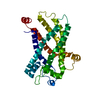
| |||||||||
|---|---|---|---|---|---|---|---|---|---|---|
| 1 |
| |||||||||
| NMR ensembles |
|
- Components
Components
| #1: Protein | Mass: 33056.074 Da / Num. of mol.: 1 / Fragment: sequence database residues 14-309 Source method: isolated from a genetically manipulated source Source: (gene. exp.)   |
|---|
-Experimental details
-Experiment
| Experiment | Method: SOLUTION NMR | ||||||||||||||||||||||||||||||||||||||||||||||||||||||||||||||||||||||||||||
|---|---|---|---|---|---|---|---|---|---|---|---|---|---|---|---|---|---|---|---|---|---|---|---|---|---|---|---|---|---|---|---|---|---|---|---|---|---|---|---|---|---|---|---|---|---|---|---|---|---|---|---|---|---|---|---|---|---|---|---|---|---|---|---|---|---|---|---|---|---|---|---|---|---|---|---|---|---|
| NMR experiment |
|
- Sample preparation
Sample preparation
| Details |
| |||||||||||||||||||||||||||||||||||||||||||||||||||||||||||||||||||||||||||||||||||||||||||||||||||||||||||||||||||||||||||||||||||||||||||||||||||||||||||||
|---|---|---|---|---|---|---|---|---|---|---|---|---|---|---|---|---|---|---|---|---|---|---|---|---|---|---|---|---|---|---|---|---|---|---|---|---|---|---|---|---|---|---|---|---|---|---|---|---|---|---|---|---|---|---|---|---|---|---|---|---|---|---|---|---|---|---|---|---|---|---|---|---|---|---|---|---|---|---|---|---|---|---|---|---|---|---|---|---|---|---|---|---|---|---|---|---|---|---|---|---|---|---|---|---|---|---|---|---|---|---|---|---|---|---|---|---|---|---|---|---|---|---|---|---|---|---|---|---|---|---|---|---|---|---|---|---|---|---|---|---|---|---|---|---|---|---|---|---|---|---|---|---|---|---|---|---|---|---|
| Sample |
|
 Movie
Movie Controller
Controller


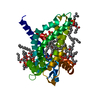
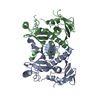
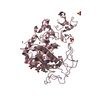

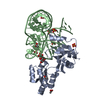

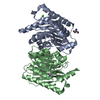
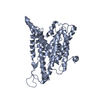

 PDBj
PDBj HSQC
HSQC